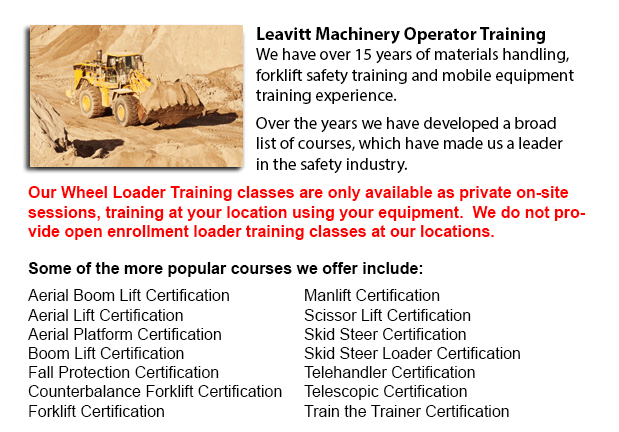
Forklifts are accessible in a wide range of load capacities and various units. Nearly all forklifts in a regular warehouse setting have load capacities between 1-5 tons. Bigger scale units are utilized for heavier loads, such as loading shipping containers, can have up to fifty tons lift capacity.
The operator could make use of a control in order to raise and lower the forks, that can likewise be called "blades or tines". The operator of the forklift could tilt the mast in order to compensate for a heavy loads tendency to tilt the blades downward. Tilt provides an ability to operate on uneven ground too. There are annual competitions meant for experienced forklift operators to compete in timed challenges and obstacle courses at local forklift rodeo events.
General operations
Forklifts are safety rated for cargo at a specific utmost weight and a specific forward center of gravity. This very important info is supplied by the maker and located on a nameplate. It is vital cargo do not exceed these specifications. It is illegal in lots of jurisdictions to tamper with or remove the nameplate without obtaining permission from the forklift maker.
The majority of forklifts have rear-wheel steering to be able to enhance maneuverability. This is specifically effective within confined spaces and tight cornering areas. This particular kind of steering differs fairly a little from a driver's initial experience along with other motor vehicles. Since there is no caster action while steering, it is no essential to utilize steering force to be able to maintain a continuous rate of turn.
Another unique characteristic common with lift truck utilization is unsteadiness. A continuous change in center of gravity occurs between the load and the lift truck and they must be considered a unit during utilization. A forklift with a raised load has centrifugal and gravitational forces that can converge to lead to a disastrous tipping mishap. In order to prevent this from happening, a lift truck should never negotiate a turn at speed with its load elevated.
Lift trucks are carefully made with a specific load limit for the blades with the limit decreasing with undercutting of the load. This means that the freight does not butt against the fork "L" and will lower with the elevation of the blade. Usually, a loading plate to consult for loading reference is located on the lift truck. It is unsafe to make use of a forklift as a worker hoist without first fitting it with specific safety devices like for example a "cage" or "cherry picker."
Forklift utilize in warehouse and distribution centers
Forklifts are an essential component of warehouses and distribution centers. It is important that the work situation they are situated in is designed in order to accommodate their efficient and safe movement. With Drive-In/Drive-Thru Racking, a forklift must travel inside a storage bay which is multiple pallet positions deep to set down or obtain a pallet. Operators are usually guided into the bay through rails on the floor and the pallet is positioned on cantilevered arms or rails. These confined manoeuvres need trained operators to do the job efficiently and safely. In view of the fact that every pallet needs the truck to go in the storage structure, damage done here is more common than with other kinds of storage. If designing a drive-in system, considering the dimensions of the blade truck, together with overall width and mast width, have to be well thought out to make sure all aspects of a safe and effective storage facility.
-
St Catharines Heavy Equipment Training Schools
St Catharines Heavy Equipment Training Schools - When selecting an operator training course, there are a lot of heavy equipment training schools to choose from. To be able to ascertain the qualifications you will attain, it is very important to explo... More -
St Catharines Heavy Equipment Operator Training
St Catharines Heavy Equipment Operator Training - Heavy equipment operator training facilities that offer quality standards within the business, offering field performance work and additional machine training are really sought after training features... More -
St Catharines Forklift Training Programs
St Catharines Forklift Training Programs - Are you looking for work as a driver of a forklift? Our regulatory-compliant mobile equipment operator training offers instruction in kinds of forklifts, pre-shift check, fuel kinds and handling of fuels, an... More -
St Catharines Heavy Equipment License
St Catharines Heavy Equipment License - A heavy equipment license can be obtained by taking a certification and preparation course at a private training school or a vocational school. This license would qualify you to operate various types of heavy e... More -
St Catharines Overhead Crane Safety Training
St Catharines Overhead Crane Safety Training - Overhead crane safety training equips operators with skills and knowledge regarding crane safety precautions, accident avoidance, materials handling, and equipment and stock protection. Trainees will lea... More -
St Catharines Scissor Lift Training
St Catharines Scissor Lift Training - Scissor lifts should be operated proficiently to be able to protect the safety of the equipment and the wellbeing of others within the workplace. Operators who are skilled are trained to drive the specific type o... More -
St Catharines Telescopic Training
St Catharines Telescopic Training - Telescopic Handlers are a kind of forklift, normally known as telehandlers. This machine has been increasing in popularity due to its greater lift heights and its versatility. It is often preferred over the convent... More -
St Catharines Boom Lift Certification
St Catharines Boom Lift Certification - Utilizing elevated work platforms allow for maintenance operations and work to be carried out at elevated work heights which were otherwise unreachable. Boom Lift Certification Training educates workers about t... More

Forklift Certification St Catharines
TOLL FREE: 1-888-254-6157
St Catharines, Ontario
forkliftcertificationstcatharines.com/
Email Us
About Us


